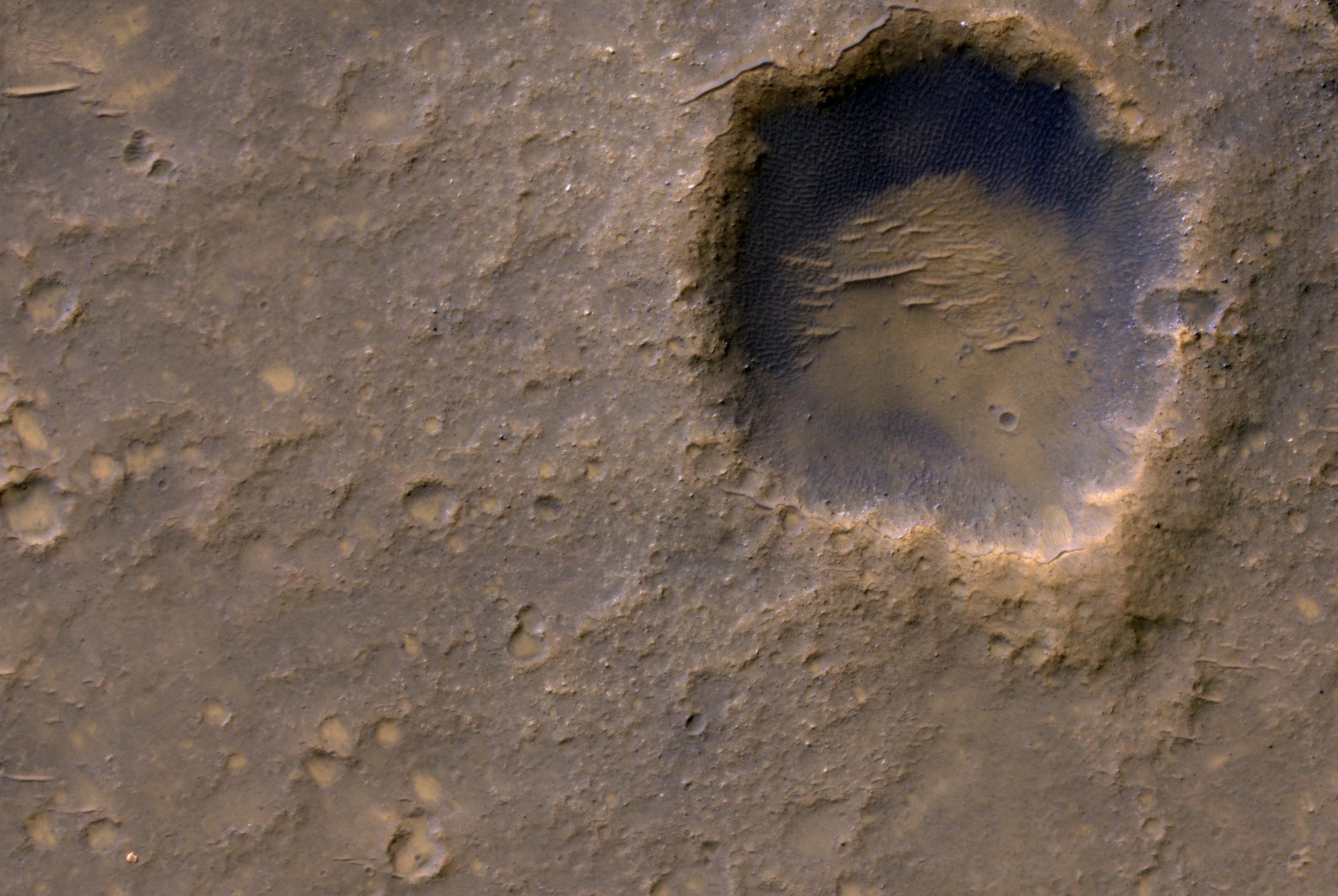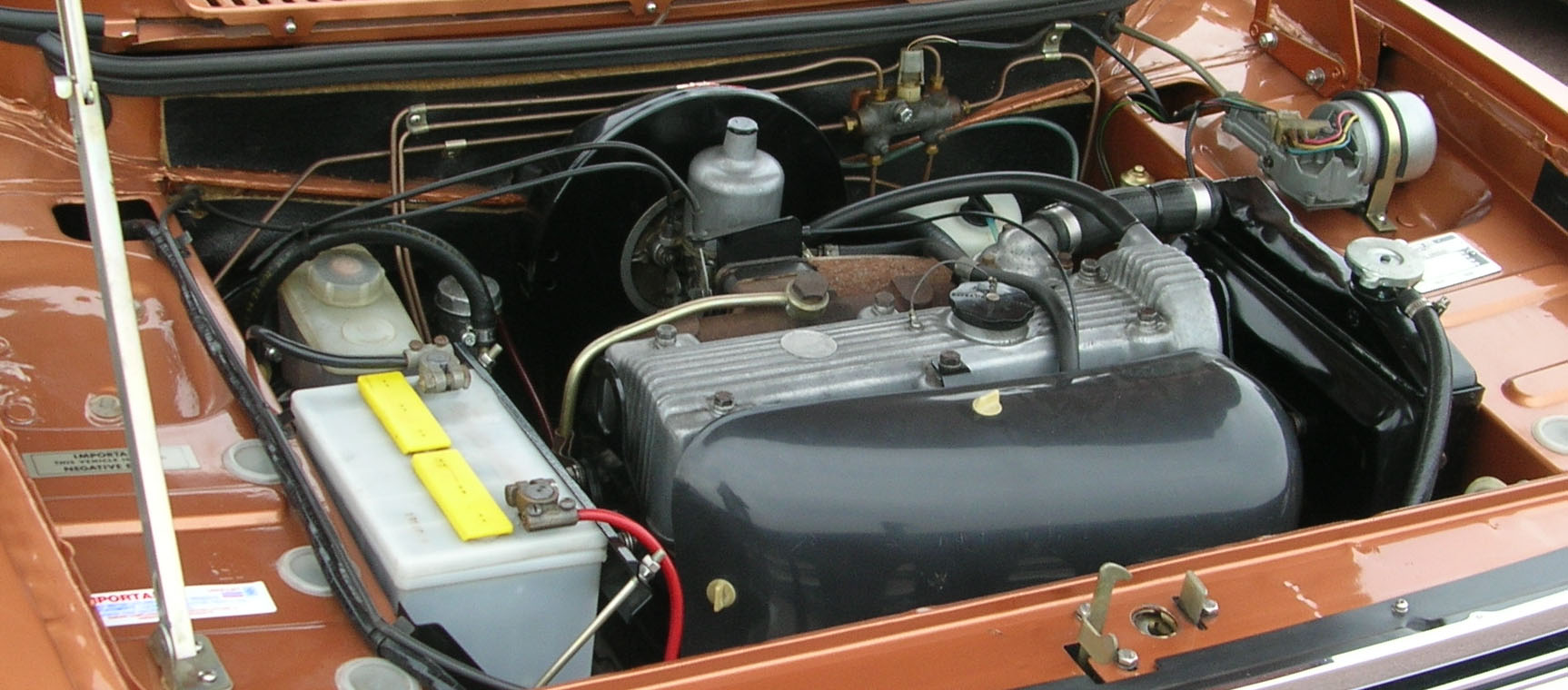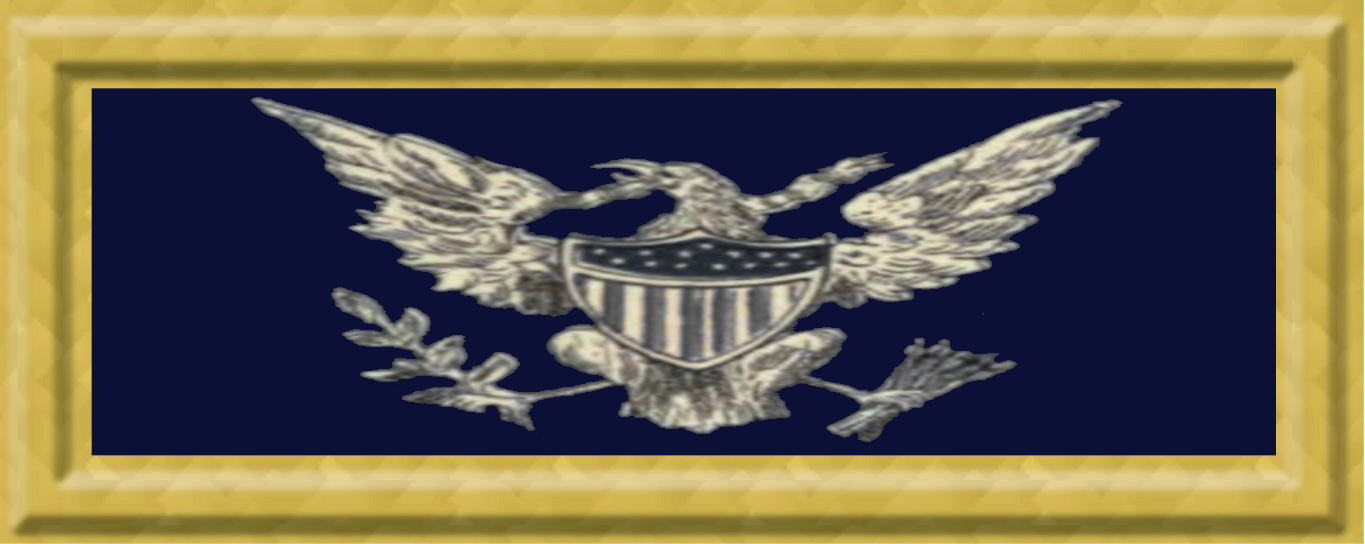|
Bonneville (crater)
Bonneville is an impact crater on Mars. It is located within the much larger crater Gusev. Bonneville was visited by the Mars Exploration Rover ''Spirit'' in 2004, during its exploration of the floor of Gusev. Bonneville is also the final resting place of ''Spirit''s heat shield, jettisoned during the landing procedure; the heat-shield could be seen glinting on the opposite wall when ''Spirit'' photographed the crater. The crater is 210 metres in diameter, 14 meters deep and its rim rises 6.4 metres above the surrounding terrain. Bonneville is named after Benjamin Bonneville and Lake Bonneville, an ancient lake in Utah. Formation and geology The strata into which Bonneville formed is thought to be loose debris, although some of the ejecta may have originated from more competent rocks. No underlying bedrock was exposed in the crater or the numerous craterlets in Bonneville's walls. The crater is relatively pristine and in particular has not been affected by water based erosion ... [...More Info...] [...Related Items...] OR: [Wikipedia] [Google] [Baidu] |
Mars Global Surveyor
''Mars Global Surveyor'' (MGS) was an American Robotic spacecraft, robotic space probe developed by NASA's Jet Propulsion Laboratory. It launched November 1996 and collected data from 1997 to 2006. MGS was a global mapping mission that examined the entire planet, from the ionosphere down through the atmosphere to the surface. As part of the larger Mars Exploration Program, ''Mars Global Surveyor'' performed atmospheric monitoring for sister orbiters during aerobraking, and helped Mars rovers and lander missions by identifying potential landing sites and relaying surface telemetry. It completed its primary mission in January 2001 and was in its third extended mission phase when, on 2 November 2006, the spacecraft failed to respond to messages and commands. A faint signal was detected three days later which indicated that it had gone into Safe mode (spacecraft), safe mode. Attempts to recontact the spacecraft and resolve the problem failed, and NASA officially ended the mission in ... [...More Info...] [...Related Items...] OR: [Wikipedia] [Google] [Baidu] |
Spirit Rover
''Spirit'', also known as MER-A (Mars Exploration Rover – A) or MER-2, is a Mars rover, Mars robotic rover, active from 2004 to 2010. ''Spirit'' was operational on Mars for Timekeeping on Mars#Sols, sols or 3.3 Martian years ( days; '). It was one of two rover (space exploration), rovers of NASA's Mars Exploration Rover Mission managed by the Jet Propulsion Laboratory (JPL). Spirit landed successfully within the impact crater Gusev (Martian crater), Gusev on Mars at 04:35 Ground UTC on January 4, 2004, three weeks before its twin, ''Opportunity (rover), Opportunity'' (MER-B), which landed on the other side of the planet. Its name was chosen through a Sofi Collis, NASA-sponsored student essay competition. The rover got stuck in a "sand trap" in late 2009 at an angle that hampered recharging of its batteries; its last communication with Earth was on March 22, 2010. The rover completed its planned 90-Martian day, sol mission (slightly less than 92.5 Earth days). Aided by cleani ... [...More Info...] [...Related Items...] OR: [Wikipedia] [Google] [Baidu] |
Gusev Crater
Gusev is a crater on the planet Mars and is located at and is in the Aeolis quadrangle. The crater is about 166 kilometers in diameter and formed approximately three to four billion years ago. It was named after Russian astronomer Matvey Gusev (1826–1866) in 1976. Prior to the exploration of the crater by the Spirit Rover, the crater was postulated to be an ancient lakebed with Ma'adim Vallis draining into it, of volcaniclastic origin, or a combination of both. These interpretations were based on ''Viking'' orbiter imagery, MOC imagery, THEMIS thermal mapping, and MOLA elevation mapping. However, Spirit did not find any lacustrine deposits, instead Spirit found alkaline volcanic rocks, including olivine basalt, comminuted basaltic debris, lavas, and pyroclastic rocks, but no eruption centers. More recently, satellite images showed the trails of dust devils on Gusev's floor. The ''Spirit'' rover later photographed dust devils from the ground, and likely owes ... [...More Info...] [...Related Items...] OR: [Wikipedia] [Google] [Baidu] |
Mars
Mars is the fourth planet from the Sun. It is also known as the "Red Planet", because of its orange-red appearance. Mars is a desert-like rocky planet with a tenuous carbon dioxide () atmosphere. At the average surface level the atmospheric pressure is a few thousandths of Earth's, atmospheric temperature ranges from and cosmic radiation is high. Mars retains some water, in the ground as well as thinly in the atmosphere, forming cirrus clouds, frost, larger polar regions of permafrost and ice caps (with seasonal snow), but no liquid surface water. Its surface gravity is roughly a third of Earth's or double that of the Moon. It is half as wide as Earth or twice the Moon, with a diameter of , and has a surface area the size of all the dry land of Earth. Fine dust is prevalent across the surface and the atmosphere, being picked up and spread at the low Martian gravity even by the weak wind of the tenuous atmosphere. The terrain of Mars roughly follows a north-south ... [...More Info...] [...Related Items...] OR: [Wikipedia] [Google] [Baidu] |
Lake Bonneville
Lake Bonneville was the largest Late Pleistocene paleolake in the Great Basin of western North America. It was a pluvial lake that formed in response to an increase in precipitation and a decrease in evaporation as a result of cooler temperatures. The lake covered much of what is now western Utah and at its highest level extended into present-day Idaho and Nevada. Many other hydrographically closed basins in the Great Basin contained expanded lakes during the Late Pleistocene, including Lake Lahontan in northwestern Nevada. Geologic description Shorelines of Lake Bonneville are visible above Salt Lake City along the western front of the Wasatch Mountains and on other mountains throughout the Bonneville basin.Gilbert, G.K., 1890. Lake Bonneville. U.S. Geological Survey Monograph 1. 438 pp. These shorelines appear as shelves or benches that protrude from the mountainside above the valley floor, are visible on the ground from long distances and on satellite images, and have both ... [...More Info...] [...Related Items...] OR: [Wikipedia] [Google] [Baidu] |
Impact Crater
An impact crater is a depression (geology), depression in the surface of a solid astronomical body formed by the hypervelocity impact event, impact of a smaller object. In contrast to volcanic craters, which result from explosion or internal collapse, impact craters typically have raised rims and floors that are lower in elevation than the surrounding terrain. Impact craters are typically circular, though they can be elliptical in shape or even irregular due to events such as landslides. Impact craters range in size from microscopic craters seen on lunar rocks returned by the Apollo Program to simple bowl-shaped depressions and vast, complex, multi-ringed impact basins. Meteor Crater is a well-known example of a small impact crater on Earth. Impact craters are the dominant geographic features on many solid Solar System objects including the Moon, Mercury (planet), Mercury, Callisto (moon), Callisto, Ganymede (moon), Ganymede, and most small moons and asteroids. On other planet ... [...More Info...] [...Related Items...] OR: [Wikipedia] [Google] [Baidu] |
Gusev (Martian Crater)
Gusev is a crater on the planet Mars and is located at and is in the Aeolis quadrangle. The crater is about 166 kilometers in diameter and formed approximately three to four billion years ago. It was named after Russian astronomer Matvey Gusev (1826–1866) in 1976. Prior to the exploration of the crater by the Spirit Rover, the crater was postulated to be an ancient lakebed with Ma'adim Vallis draining into it, of volcaniclastic origin, or a combination of both. These interpretations were based on ''Viking'' orbiter imagery, MOC imagery, THEMIS thermal mapping, and MOLA elevation mapping. However, Spirit did not find any lacustrine deposits, instead Spirit found alkaline volcanic rocks, including olivine basalt, comminuted basaltic debris, lavas, and pyroclastic rocks, but no eruption centers. More recently, satellite images showed the trails of dust devils on Gusev's floor. The ''Spirit'' rover later photographed dust devils from the ground, and likely owes much of ... [...More Info...] [...Related Items...] OR: [Wikipedia] [Google] [Baidu] |
Heat Shield
In engineering, a heat shield is a component designed to protect an object or a human operator from being burnt or overheated by dissipating, reflecting, and/or absorbing heat. The term is most often used in reference to exhaust heat management and to systems for dissipating frictional heat. Heat shields are used most commonly in the automotive and aerospace industries. Principles of operation Heat shields protect structures from extreme temperatures and thermal gradients by two primary mechanisms. Thermal insulation and radiative cooling, respectively isolate the underlying structure from high external surface temperatures, while emitting heat outwards through thermal radiation. To achieve good functionality the three attributes required of a heat shield are low thermal conductivity (high thermal resistance), high emissivity, and good thermal stability (refractoriness). Porous ceramics with high emissivity coatings (HECs) are often employed to address these three characteristic ... [...More Info...] [...Related Items...] OR: [Wikipedia] [Google] [Baidu] |
Science (journal)
''Science'' is the peer review, peer-reviewed academic journal of the American Association for the Advancement of Science (AAAS) and one of the world's top academic journals. It was first published in 1880, is currently circulated weekly and has a subscriber base of around 130,000. Because institutional subscriptions and online access serve a larger audience, its estimated readership is over 400,000 people. ''Science'' is based in Washington, D.C., United States, with a second office in Cambridge, UK. Contents The major focus of the journal is publishing important original scientific research and research reviews, but ''Science'' also publishes science-related news, opinions on science policy and other matters of interest to scientists and others who are concerned with the wide implications of science and technology. Unlike most scientific journals, which focus on a specific field, ''Science'' and its rival ''Nature (journal), Nature'' cover the full range of List of academ ... [...More Info...] [...Related Items...] OR: [Wikipedia] [Google] [Baidu] |
Benjamin Bonneville
Benjamin Louis Eulalie de Bonneville (; April 14, 1796 – June 12, 1878) was an American officer in the United States Army, fur trapper, and explorer in the American West. He is noted for his expeditions to the Oregon Country and the Great Basin, and in particular for blazing portions of the Oregon Trail. During his lifetime, Bonneville was made famous by an account of his explorations in the West written by Washington Irving. Early life Benjamin was born in or near Paris, France, the son of the French publisher Nicholas Bonneville and his wife Marguerite Brazier. When he was seven, his family moved to the United States; their passage was paid by Thomas Paine. Paine had lodged with the Bonnevilles in France and was godfather to Benjamin and his two brothers, Louis and Thomas. In his will, Paine left the bulk of his estate to Marguerite who had cared for him until he died in 1809. The inheritance included 100 acres (40.5 ha) of his New Rochelle, New York farm where they h ... [...More Info...] [...Related Items...] OR: [Wikipedia] [Google] [Baidu] |
Utah
Utah is a landlocked state in the Mountain states, Mountain West subregion of the Western United States. It is one of the Four Corners states, sharing a border with Arizona, Colorado, and New Mexico. It also borders Wyoming to the northeast, Idaho to the north, and Nevada to the west. In comparison to all the U.S. states and territories, Utah, with a population of just over three million, is the List of U.S. states and territories by area, 13th largest by area, the List of U.S. states and territories by population, 30th most populous, and the List of U.S. states by population density, 11th least densely populated. Urban development is mostly concentrated in two regions: the Wasatch Front in the north-central part of the state, which includes the state capital, Salt Lake City, and is home to roughly two-thirds of the population; and Washington County, Utah, Washington County in the southwest, which has approximately 180,000 residents. Most of the western half of Utah lies in ... [...More Info...] [...Related Items...] OR: [Wikipedia] [Google] [Baidu] |








